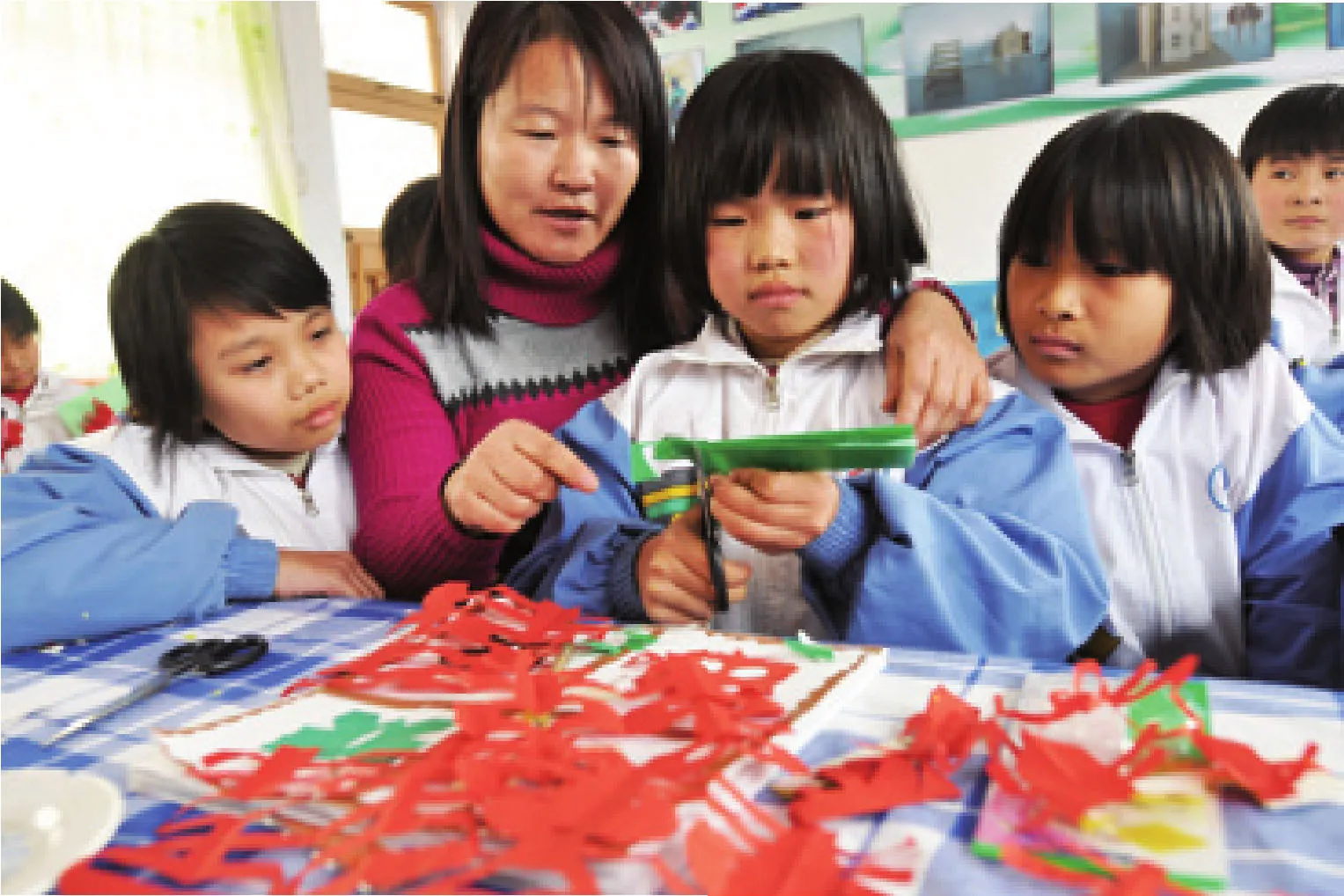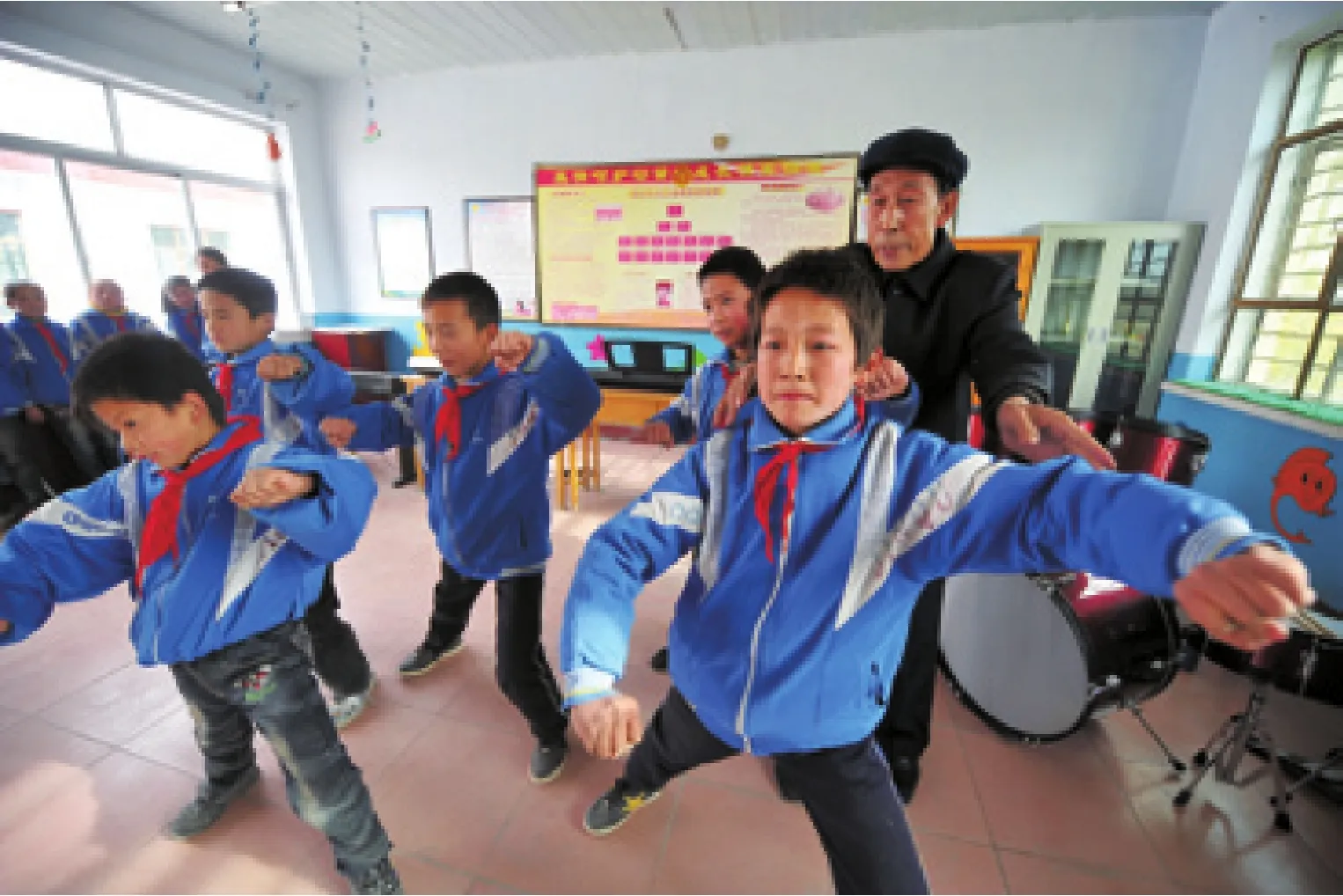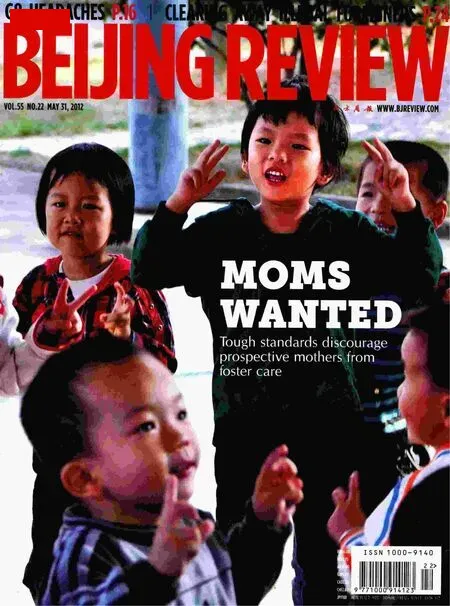State of Art Rural communities long for art education
By Yu Yan
State of Art Rural communities long for art education
By Yu Yan
“I like playing the violin, and I can already play several songs,” said Wei Luxi happily, holding a violin. She lives in Fengtai District in Beijing, and her parents are both well-paid engineers. At five years old, the kindergartner has played the violin for a year and is already doing well with the musical instrument.
Wei’s story is not unusual. In addition to classes at kindergarten, most of her classmates attend weekend art classes, learning piano, violin, painting, ballet and other skills.
However, children in rural areas are missing out on the education enjoyed by kids like Wei in urban neighborhoods. Insufficient teaching staff and poor facilities mean many rural primary schools lack the resources to offer students art education. Music, fine art, dance, theater, flm, and other creative studies are out of reach for many children outside of China’s urban centers.
A blank canvas
“Art education is still missing in many rural primary schools, especially those in remote areas,” said Liu Xiya, headmaster of Xiejiawan Primary School in southwest China’s Chongqing Municipality.
Liu has taught music and fine art for about 10 years. In order to get frst-hand information about the art learning situation of rural students, she conducted questionnaire surveys. To her delight, the surveys showed the children had very extensive interests, with some wishing to make a difference in the art feld. However, some had never taken a class in the arts.
Although authorities have recognized the positive benefts of art schooling in rural areas, the conditions remain quite poor, said Liu.
Liu’s belief was shared by Zhang Xingyi, a fine art teacher of Chuxiong Experimental Primary School in southwest China’s Yunnan Province.
The lack of resources like musical instruments made it difficult to form a sound art education atmosphere, said Zhang.
“The fine art classes are often occupied by the so-called major subjects such as the Chinese language and mathematics, due to the examination pressure,” Zhang continued. “My students seldom have opportunities to learn fne art.”
Liu and Zhang speak for nearly all rural art teachers. Educators hope more children in small towns and villages will have the opportunity to access art, create artwork and devote more time to art education.
通过上述两次线性回归的方法得到的频偏θ和相偏β会受到预估的多普勒规模因子误差的影响,尽管可以通过迭代的方式来减小误差,但是并不能得到最优解.CB-Sync算法通过最小梯度下降算法来预估频偏θ的最优解,由于最小梯度下降算法存在最优解为极小值的情况,所以将两次线性回归方法得到的频偏θ和相偏β的值作为最小梯度下降算法的初始解,确保得到的最优解是最小值.
Challenges
The lack of professional art teachers ranks frst among all the challenges facing rural art education programs.
“Our township has two schools and three teaching centers. However, for these five places, there is only one fne art teacher and one music teacher. Due to the lack of teachers, some schools could only put a television in the classroom, and let the students learn singing from the TV,” said Zhang Guijie, headmaster of a center school in Wenchen, Chiping County of east China’s Shandong Province.
Many schools require teachers of other subjects to lead art classes as well. As a result, the teaching quality can be poor.
According to recent statistics by Ministry of Education, urban schools are suffering from a 29-percent and 12.2-percent shortfall in music and fne art teachers respectively, while rural schools face an incredible 60.4-percent and 58.6-percent shortage.

DONG NAIDE
The big difference in art education between urban and rural areas stems from the policy on the number of teachers. The current policy is decided by a rule made in 2001 which sets the pupil-teacher ratio in cities at 18:1, and 23:1 in rural areas, said Yuan Guilin, a professor of education at Beijing Normal University.
Based on this standard, the number of teachers is determined by the number of students. Where there are more students, particularly in urban areas, there are more teachers. The policy has contributed to the incomplete education of rural primary school students, said Yuan.
The shortage of available funds is another big challenge, and is most severe in rural places.

ZHANG MENG
Now, the quality of art education mainly depends on parents rather than schooling. Urban parents enroll their children in outside institutions to learn musical instruments, dancing, painting, and so on. This is nearly impossible for rural children due to their families’ poor economic situation.
The examination-oriented education has added to the difficulties. When exam approaches, art classes are always cancelled and replaced by major subjects to help students get a better score in the exams.
The absence of art education in rural areas widened the urban-rural gap. Rural children who miss out on creative arts are in a more disadvantageous position in future competitions in college and society.
“Since so many rural primary schools couldn’t give art lessons, the educational equality is severely damaged,” said Zhang Zhiyong, Vice Director General of Shandong Provincial Department of Education. “This will ultimately hurt the fundamental interests of rural children and undermine their overall competence.”
Creative endeavors
Fortunately, the importance of art education has been more and more recognized in recent years.
“Art education cultivates a child’s mind, inspires their creativity, and leads them to pursue their life goals,” said Zhou Yuanqing, China’s former vice minister of education. Without the ability to appreciate art, he added, a person is incomplete.
“It should be the goal of art education to train comprehensive, high-quality talents,”Zhou continued. “And the role of art education is irreplaceable by other subjects.”
Chinese education experts agree that with the rapid development of economy and education, the art education of primary school students has entered a new phase. It is essential for the government to increase input, strengthen management and form a scientifc teaching assessment system that includes artistic skills.
Against this backdrop, many successful examples have emerged in rural schools. Nanbu County of Nanchong, Sichuan Province, is one of the 58 pilot places of a rural school art education program announced by Ministry of Education in 2000. A decade ago, the county suffered from a severe lack of art teachers.
To solve this problem, the county took various measures to increase the number of art teachers, including graduates from art colleges as full-time art teachers and part-time art teachers.
The school recruited accomplished teachers of urban schools to take turns teaching art in rural schools, training new teachers, and testing their abilities through various competitions. In the years that followed, the school’s art education has made great achievements.
As part of the effort to promote art education, teachers of east China’s Jiangsu Province recorded excellent music lessons and sent the videos to rural schools. The exchange has strengthened ties between urban and rural schools. The province also sends music teachers to give lessons to students in remote areas.
Similar practices have also been adopted in Beijing and Tianjin municipalities, and provinces such as Hebei, Guangdong and Zhejiang.
“These practices were conducive to narrowing the art education gap between urban and rural areas,” said Peng Jixiang, Deputy Secretary General of the Art Education Committee in the Ministry of Education.
In addition to improving teaching resources of rural schools, many places have enriched the contents of art education by introducing folk arts into the classroom.
Local folk arts such as straw plaiting andTanhuangOpera deepened the students’recognition and love for their cultural roots. They boost rural children’s interest in art and enhanced their understanding of various art forms. In Sichuan Province, local folk arts like paper-cutting, decorative lanterns, root carving and clay sculpture have been introduced into primary schools. Many have become the children’s favorite lessons.
yuyan@bjreview.com

